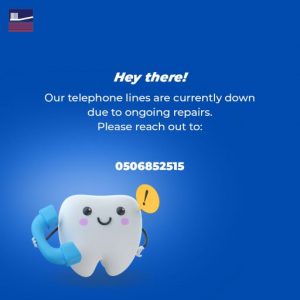
Our lifestyles can become quite hectic and stressful at times – jobs, kids and just not having enough time during the day to accomplish it all. To some people’s surprise, this daily stress can be reflected onto the integrity of their teeth.
You might have sometimes found yourself grinding or clenching your teeth during times of stress, concentration, sleep or even when lifting weights at the gym. Over time, these jaw movements can develop into a habit – a condition known as bruxism (derived from the Greek word (brykein) which means to bite, gnash or grind the teeth).
According to the American Dental Association, anxiety and stress are the main lifestyle factors that serve as the primary cause of these damaging oral habits. Malocclusion (bad bite), missing teeth, crooked teeth and sleep disturbances are the secondary contributing factors.
The National Sleep Foundation reports that around 8 percent of the adult population suffers from night time bruxism and an estimated 20 percent of people during waking hours. Bruxism can go by undetected for years until its effects start to show on your teeth. You may begin to notice that a tooth or a filling has suddenly fractured, a crack develops in your tooth, unexplained headaches become more constant or that your teeth start to appear shorter, flatter and smaller over time.
Bruxism can also begin early on in life during the tooth development phase and as a result, approximately 15 percent of children grind or clench their teeth. This dental condition perseveres in 3 percent of individuals well into adulthood, and subsequently subsides in others.
It can be quite hard to believe that you could be doing such movements with your teeth at night, at times making people reluctant to accept the proposed treatment.
How can I spot signs of bruxism?

To better understand the effects of clenching and grinding, let us go through a quick review of the tooth structure.
Enamel is the mineralised substrate which gives our teeth that natural white colour and protects the nerve innervated inner portion of the tooth called the dentine.
Dentine is naturally ‘yellowish’ in colour and consists of tubules which are directly linked to the inner nerve or ‘pulp’ of the tooth.
Enamel is the hardest substance in our bodies. Tooth grinding physically removes this strong protective layer and exposes the weaker and sensitive living portion of the tooth. It is the exposure of this dentine which gives people that unpleasant sensitivity when teeth are exposed to something cold or sweet.
To reach this inner portion of the tooth, one must grind through around 2.0 mm – 2.5 mm of enamel. Teeth are naturally ‘pointy’ and have pointed or cornered edges. Teeth that have succumbed to the pressures of grinding would start to have their edges appear ‘flat’. Such extreme wear is the result of a long period of this damaging oral habit and it starts to affect the gums, bones and the jaw joints.
If you are grinding at night, you may start to notice yourself waking up with sore teeth, a stiff jaw and headaches. Teeth grinding sometimes produces a lot of noise and your partner may hear this during the night.
Is tooth wear a normal process of aging?
Some patients ask if such tooth wear is a normal process of aging. This is a correct assumption, but we first must compare normal and extreme tooth wear. The enamel is subjected to normal daily stresses and it wears down at around the rate of 0.3 mm every 10 years. People who suffer from bruxism can cause around 2 mm of enamel erosion as early as their mid-twenties.
It is important to note that during sleep our protective reflexes are subdued and we cannot control the force we are producing with our teeth. Grinding or clenching can produce up to 4 times more force at night time than day time. Nocturnal bruxism can occur as often as for a few minutes or as frequent as for 40 minutes every hour of sleep, producing enough force to crack a walnut.
How is bruxism treated?
A custom-fitted acrylic mouth guard is the treatment of choice for people who are grinding or clenching their teeth. A night guard is unlike a sports night guard. This dental appliance has a custom fit to your teeth and sits comfortably at about halfway up the tooth surface. It works by absorbing the forces produced by grinding and clenching, thus protecting your teeth from further damage and also helps to reduce the strain on your jaw muscles.
Orthodontics may be the treatment of choice when misaligned teeth are contributing to the problem. Reducing stress is also crucial to alleviating the extent of these oral habits. Take some time out for yourself to do some yoga, meditation, psychotherapy or go on a vacation.
If you believe you may be grinding or clenching your teeth, make sure to see your dentist.

Dr. Svetlana Nekrutenko
General Dentist





